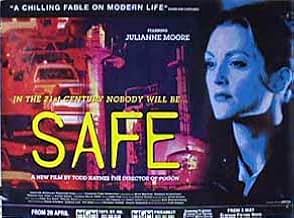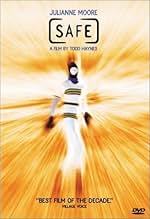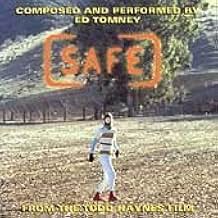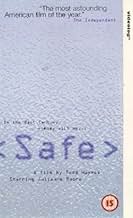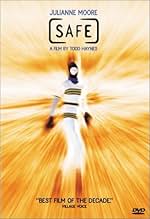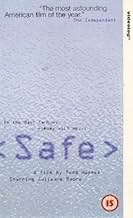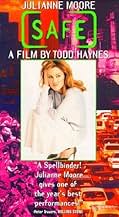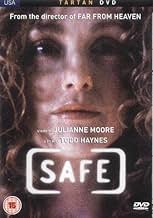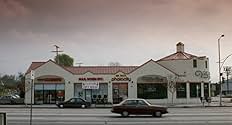ÉVALUATION IMDb
7,1/10
18 k
MA NOTE
Une femme au foyer aisée et ordinaire vivant dans la banlieue développe une polysensibilité chimique.Une femme au foyer aisée et ordinaire vivant dans la banlieue développe une polysensibilité chimique.Une femme au foyer aisée et ordinaire vivant dans la banlieue développe une polysensibilité chimique.
- Prix
- 4 victoires et 12 nominations au total
Martha Velez
- Fulvia
- (as Martha Velez-Johnson)
Chauncey Leopardi
- Rory
- (as Chauncy Leopardi)
Allan Wasserman
- Client
- (as Alan Wasserman)
Jean St. James
- Client's Wife
- (as Jean Pflieger)
Histoire
Le saviez-vous
- AnecdotesWhen it came time for Julianne Moore to record the director's commentary for the 2003 DVD release, this was the first time the lead actress had seen the movie in its entirety.
- GaffesAlthough this film was explicitly set in 1987, while Carol is driving on the highway, she passes a burgundy 1992 Cadillac de Ville.
- Citations
[last lines]
Carol White: I love you. I love you. I really love you. I love you.
Commentaire en vedette
I watched Safe for our coverage of 1980s's health movements and the AIDS virus with a special eye for the conflict between New Age healers and "the medical profession." Safe connects so well with both; although there's no real homosexuality anxieties in the film, AIDS seem the unconquerable illness penetrating the lives of happy suburban people.
First of all, Julianne Moore is absent in the film. Her character, Carol White, is a model, rich California suburban housewife. We notice how absent she is from the moment that sex with her husband produces nothing in her, but she goes through the motions of kissing him and petting him afterwards. She has mechanical conversations with friends, with mother, with cleaning lady in her ultramodern, lush, carpeted, fashionably lit house with gardens surrounding it and police patrol by night. She goes to her workouts, cleaners, and arranges furniture.
This is a really tragic film. It's also brilliantly shot, edited, acted, and its sets are so appropriate. The use of teal and sky blue becomes numbing, anesthetizing in Carol's home, as does the harsh lighting of the doctor's office and the hospital. The Wrenwood Center itself resembles where Deckard would have gone at the end of Blade Runner as the orig. end credits seemed to indicate: mountains and nature as an antidote to the city.
However, it's not URBAN life that seems to be killing Carol- it's SUBURBAN life, it's Northern California, it's fruit diets, mini-malls, 80s music playing in health clubs, housewifes, gardens, pools, teal green couches, endless lines of cars, power lines, and street lights. It's dismal, and her family life is no big help having no real life to it.
At one point, in a really wrenching scene, Carol cries, looks at Greg from the bed and asks "Where am I? Right now?" He responds flatly but tenderly, "You're in Carol and Greg's house." She only cries more.
The question is: what is really wrong with Carol White? Did she succumb to depression and make herself a psychosomatic illness? Is she really sick and dying? Is she just afraid of living? It seems to me the more that Carol is told that she is the only one with the power to cure herself, the less power she seems to have. The final monologue where she stands in front of the group and discusses how far she's come is inarticulate, random, unthought, and not a good sign.
The acting is done well for its purposes, especially by Peter Dunn, the leader. He creates an interesting portrait of a man who is so determined to be a victim that he's created people who are dependent on him. Peter is the only dynamic presence in the film, but even he wants peace, love, and tranquility in our hearts. That doesn't seem to feed Carol.
This film reminded me of Koyaanisqatsi, visions of emptiness and life out of balance. Carol looks out her car window at the highways and powerlines and headlights, and she reminded me of someone watching that film, fearing technology. Yet even retreating from technology is not an ALTERNATIVE: it's a sign of defeat, isn't it?
The film doesn't offer solutions- only one of the most frightening, eerie, and numbing indictments of suburbia and the New Age that I have ever seen. It puts its images, sets, sounds, actors into a collective vision of decay, expressed through the decline of the model suburban housewife. See it, but don't look for answers or happy endings.
First of all, Julianne Moore is absent in the film. Her character, Carol White, is a model, rich California suburban housewife. We notice how absent she is from the moment that sex with her husband produces nothing in her, but she goes through the motions of kissing him and petting him afterwards. She has mechanical conversations with friends, with mother, with cleaning lady in her ultramodern, lush, carpeted, fashionably lit house with gardens surrounding it and police patrol by night. She goes to her workouts, cleaners, and arranges furniture.
This is a really tragic film. It's also brilliantly shot, edited, acted, and its sets are so appropriate. The use of teal and sky blue becomes numbing, anesthetizing in Carol's home, as does the harsh lighting of the doctor's office and the hospital. The Wrenwood Center itself resembles where Deckard would have gone at the end of Blade Runner as the orig. end credits seemed to indicate: mountains and nature as an antidote to the city.
However, it's not URBAN life that seems to be killing Carol- it's SUBURBAN life, it's Northern California, it's fruit diets, mini-malls, 80s music playing in health clubs, housewifes, gardens, pools, teal green couches, endless lines of cars, power lines, and street lights. It's dismal, and her family life is no big help having no real life to it.
At one point, in a really wrenching scene, Carol cries, looks at Greg from the bed and asks "Where am I? Right now?" He responds flatly but tenderly, "You're in Carol and Greg's house." She only cries more.
The question is: what is really wrong with Carol White? Did she succumb to depression and make herself a psychosomatic illness? Is she really sick and dying? Is she just afraid of living? It seems to me the more that Carol is told that she is the only one with the power to cure herself, the less power she seems to have. The final monologue where she stands in front of the group and discusses how far she's come is inarticulate, random, unthought, and not a good sign.
The acting is done well for its purposes, especially by Peter Dunn, the leader. He creates an interesting portrait of a man who is so determined to be a victim that he's created people who are dependent on him. Peter is the only dynamic presence in the film, but even he wants peace, love, and tranquility in our hearts. That doesn't seem to feed Carol.
This film reminded me of Koyaanisqatsi, visions of emptiness and life out of balance. Carol looks out her car window at the highways and powerlines and headlights, and she reminded me of someone watching that film, fearing technology. Yet even retreating from technology is not an ALTERNATIVE: it's a sign of defeat, isn't it?
The film doesn't offer solutions- only one of the most frightening, eerie, and numbing indictments of suburbia and the New Age that I have ever seen. It puts its images, sets, sounds, actors into a collective vision of decay, expressed through the decline of the model suburban housewife. See it, but don't look for answers or happy endings.
- DannyBoy-17
- 20 avr. 1999
- Lien permanent
Meilleurs choix
Connectez-vous pour évaluer et surveiller les recommandations personnalisées
- How long is Safe?Propulsé par Alexa
Détails
Box-office
- Budget
- 1 000 000 $ US (estimation)
- Brut – États-Unis et Canada
- 512 245 $ US
- Fin de semaine d'ouverture – États-Unis et Canada
- 15 830 $ US
- 25 juin 1995
- Brut – à l'échelle mondiale
- 512 558 $ US
Contribuer à cette page
Suggérer une modification ou ajouter du contenu manquant



